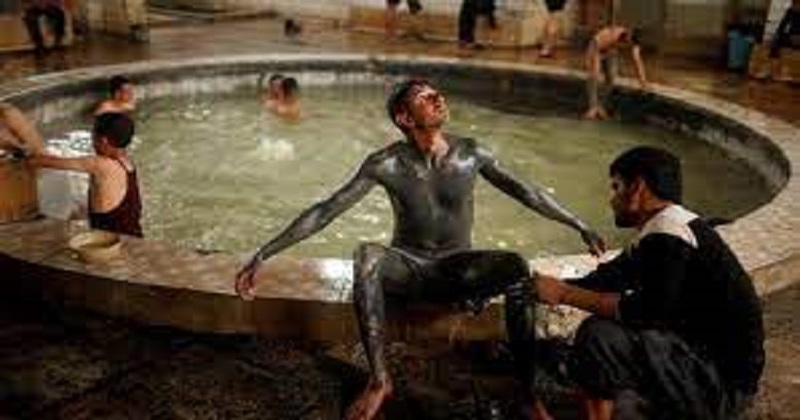
A mineral spa in northern Iraq is regaining appeal, thanks to remodelling work that has brought visitors back to a city long dominated by Islamists who carried out mass killings. Hisham Khaled used to go to the Hamam al-Alil baths with his father as a youngster, but now that the facility has been restored, he visits alone. The Islamic State (IS) organisation killed his father, a police officer, near the baths in 2016.
Hamam al-Alil, located 30 kilometres (20 miles) south of Mosul, has earned a good reputation over decades for its medicinal sulphurous springs. However, the spa and its adjacent hamlet of the same name are now notorious for IS killings perpetrated during their takeover of the area. ‘ I lost the individuals who were dearest to me,’ Khaled, 21, laments while sitting naked and in his underwear beside the spa’s circular pool, according to AFP.
Locals are dissatisfied, as they are in other districts of Mosul, with the glacial pace of restoration five years after the jihadists were forced out. However, the restoration of the Tigris River baths last month helps to a return to normalcy, even though the scars of battle linger. Khaled currently works as a masseuse at the spa and bathes on a daily basis. He claims that the sulphur-rich waters have healed him of allergies and dermatological issues.
The resort, established in 1984, can accommodate between 75 and 100 guests, with separate facilities for men and women. On the adjacent sidewalks, improvised kiosks offer plastic bottles filled with sulphurous muck. After IS was defeated in 2017, the baths remained popular, despite the structure falling into ruin, with chipped tiles and damaged windows. Authorities spent $500,000 on renovations in 2019. IS gathered up and killed hundreds of individuals in late 2016, only months before being forced out of Mosul by the Iraqi army and a US-led multinational coalition.
The remains of some of the victims were discovered in the open among the rubbish, leading investigators to the mass grave, which was thought to house ‘the bodies of at least 300 former local police officers,’ according to Human Rights Watch at the time. Today, local officials are criticising the delayed pace of identifying the dead, as DNA testing is still ongoing. According to Ahmed, the spa employee, the jihadists ‘worked at night, murdered them, and buried them with a bulldozer’.

Post Your Comments